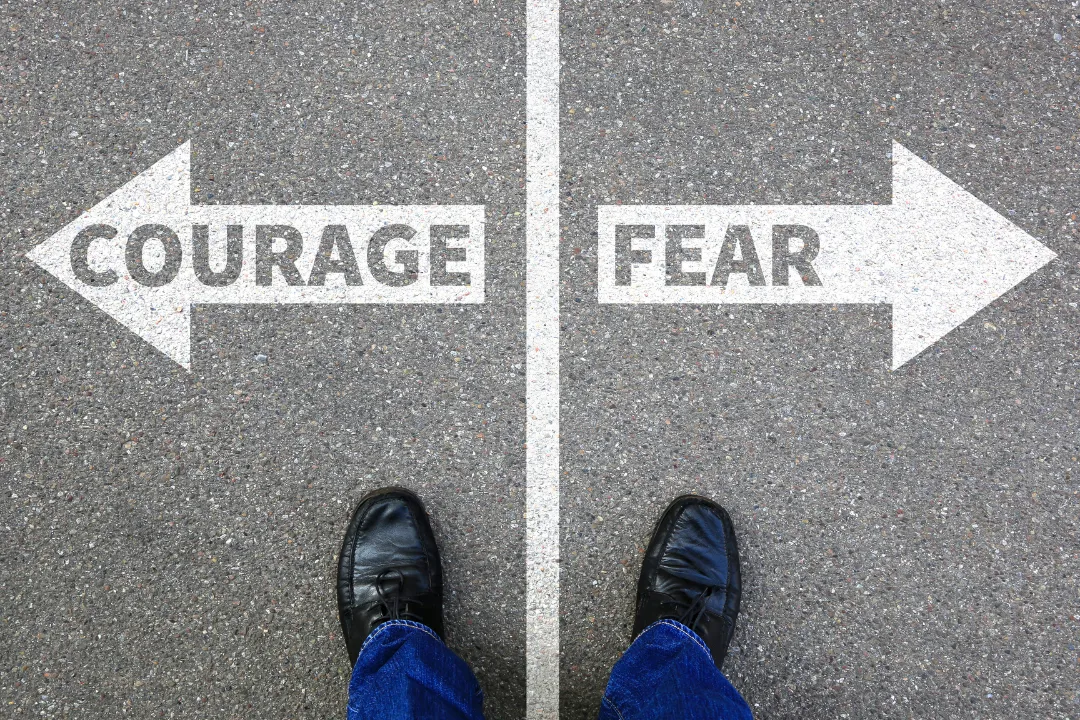
Facing Fear-By Sean McBride
Facing Fear - By Sean McBride

Fear doesn’t just keep us stuck; it keeps us small. It whispers when we try to change. It tightens our chest when we reach out for help. It shows up not just in trauma, but in possibility. So why does fear feel so real, even when what we’re afraid of hasn’t happened? Why does stepping into recovery feel more terrifying than staying where we are, even when “where we are” is painful? In this article, we will explore and uncover what fear really is, where it comes from, and why it’s not the enemy. We will unravel why we even experience fear and what it’s trying to do for us.
The Biology of Fear - A Survival System Gone Awry
Fear isn’t weakness. It’s wiring. Deep in the brain is a structure called the amygdala. The part of your brain that is responsible for sensing threats and triggering a survival response. This is its way of getting you to prepare to defend yourself. To have enough adrenaline and other chemicals to think and move faster if there’s an immediate threat to your well-being. When you feel fear, your body isn’t being dramatic. It’s preparing you to fight, flee, or freeze. That’s how we survived predators, enemies, and real danger for thousands of years.
But in today’s world, the threats are different.
They’re not bears in the woods or lions waiting in the reeds. They’re rejection. Change. Vulnerability. Shame. Even more over, bills, partners, bosses. Likes, follows, dislikes. Fashion choices, lifestyle choices, and a myriad of infinite unknowns to fear. Most of them are not even physically real. More so, ones that won’t even come to be. And the amygdala? It doesn’t know the difference.
That’s why calling a treatment center can make your hands sweat. Why walking into a group meeting feels like walking into a spotlight. Your body isn’t lying to you. It’s protecting you, just not in the way you need.

Fear and Addiction: Why Letting Go Feels Unsafe
In addiction, the brain learns that the substance is tied to survival.
It becomes a coping mechanism, a social tool, an escape hatch, a shield. It’s the go to instead of facing reality. Reality brings with it realizations. Realizations bring about work or self discovery. That translates into more trouble than our lazy brains think its worth ultimately. So when someone tries to break the pattern, the brain often panics.Even if that pattern is destructive. Even if it’s life-threatening.
Because what’s familiar always feels safer than what’s uncertain.
This is why recovery isn’t just about detoxing or stopping a behavior. It’s about retraining the nervous system. And that takes time, safety, and repetition. Even if you’ve been abusing something for a year, your brain doesn’t have a concept of time, only purpose and effort applied. So that year may take two or more to reprogram away from the stimuli or substance the brain used to soothe you and ultimately itself.
Facing Fear: Not by Erasing It, But By Moving With It
You don’t have to eliminate fear to change your life.
You just have to stop letting it make the decisions.
Here’s what facing fear actually looks like in practice:
1. Naming It
Fear loses power when it’s spoken aloud. Write it down. Say it to someone you trust.
“I’m afraid I’ll fail again.”
“I’m scared of being judged.”
Naming fear turns it from a fog into a shape. A form. Something you can identify. If you can identify it, you can work with it. Otherwise, it is the fog of fear that envelopes and engulfs you.
2. Let It Exist (Without Running)
It’s okay to feel scared. You can sit with fear without letting it hijack your choices.
Anxiety often peaks when we resist it. But when we breathe into it, when we acknowledge it and even appreciate its purpose, it starts to soften.
3. Anchor in Reality
Not everything fear says is true. In fact most of it is to steer you towards the easy and repetitious choice.
“You always relapse.”
“You don’t belong there.”
“They’ll think you’re broken.”
These are emotional forecasts, not facts. Ways that your brain gets you to not even try. To accept a fate that isn’t pre-decided. It’s not that your brain is against you. It’s just that our brains are lazy muscles. Always trying to do as little as possible. So the best way to counter that is to be present and anchor in what’s actually happening now.
You’re breathing. You’re reading this. You’re considering the next step. That’s real.
4. Take Action Anyway (With Support)
Courage isn’t the absence of fear. It’s an action in its presence.
That can mean showing up to a meeting. Turn your camera on. Sending one message.
Small, imperfect steps count. They always have. Things that you might not think have a huge impact can. Instead of seeing it as one massive thing, break it into many small, easily doable steps. It’s remarkable how 100 small steps can be a lot easier than 20 giant ones.
Fear Is a Doorway, Not a Dead End

What if fear didn’t mean “stop”? What if it meant this matters? What if it was signalling to you that it might be tough, but worth it more than the easy way out?
We all come to change with trembling hands. What makes the difference is who’s holding them.When we walk together, even if scared, fear becomes something else: a signpost.
It says you’re on the edge of something that could grow you.Always remember you don’t need to be fearless to heal. You just need to be willing.And you don’t have to do it alone. It’s not about how fast you move forward. It’s about putting one foot in front of the other without stopping.